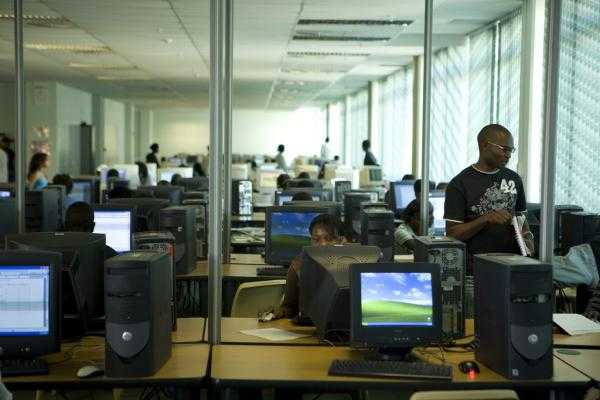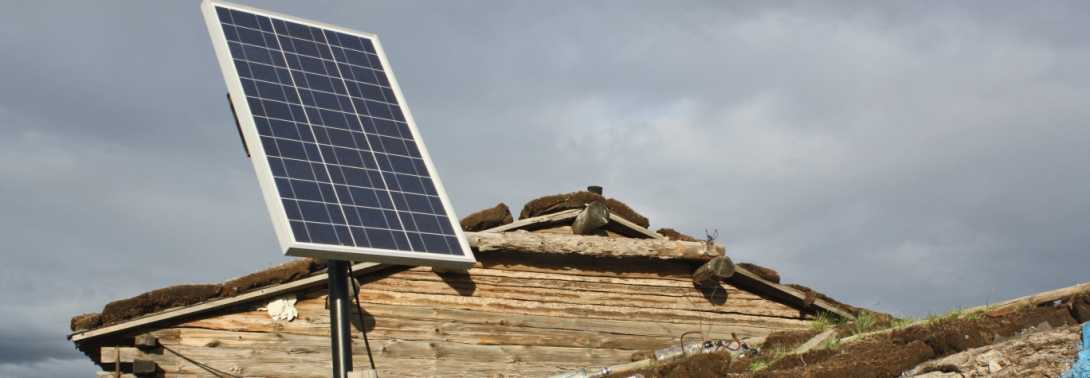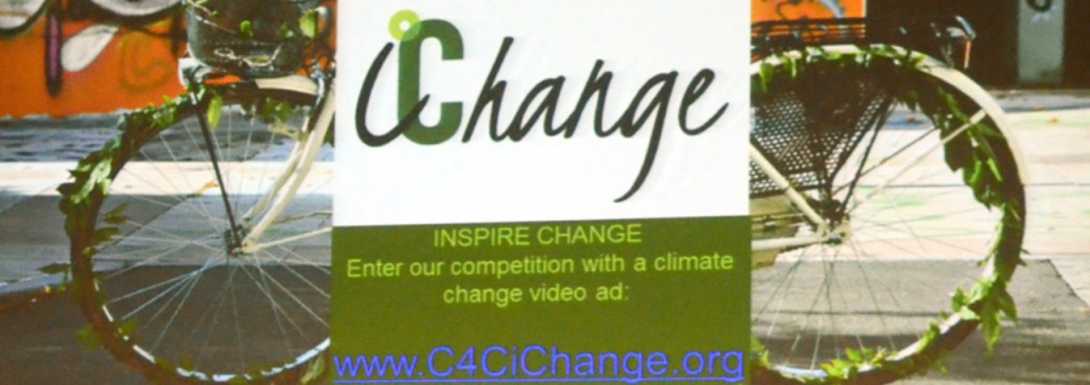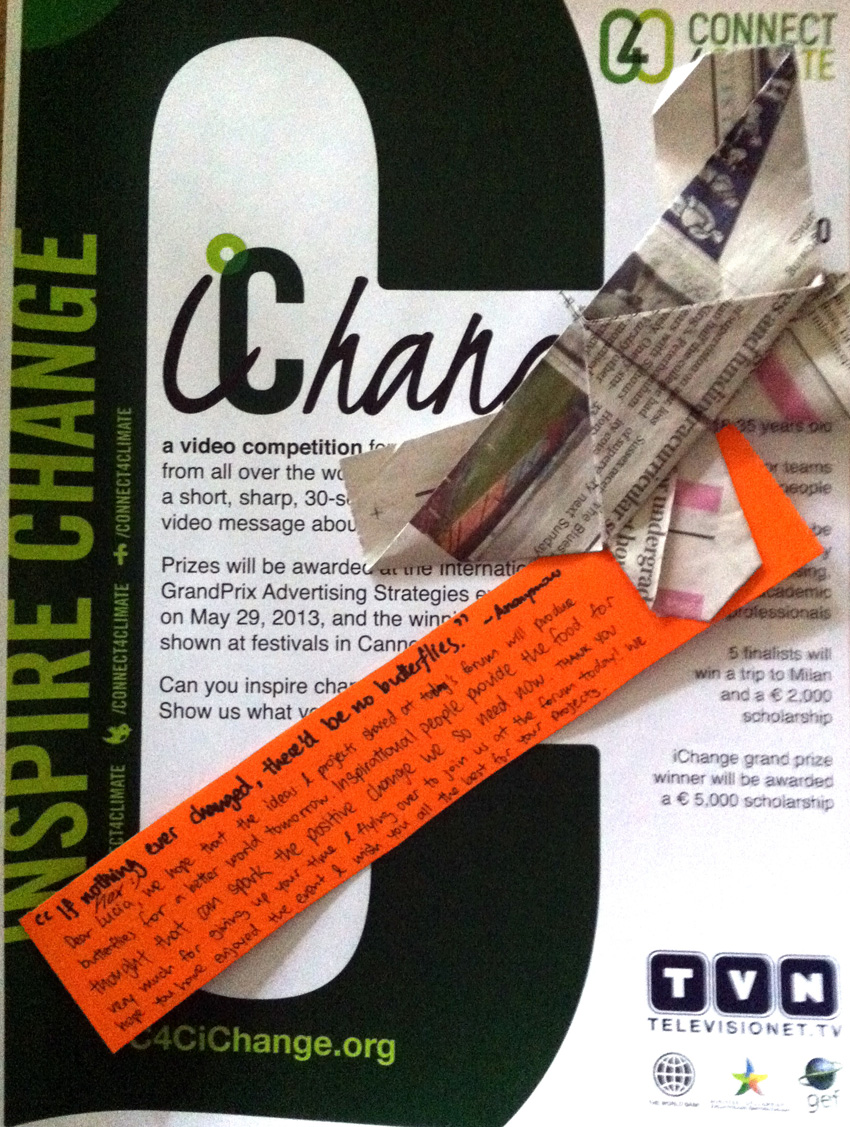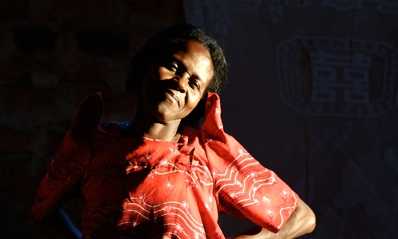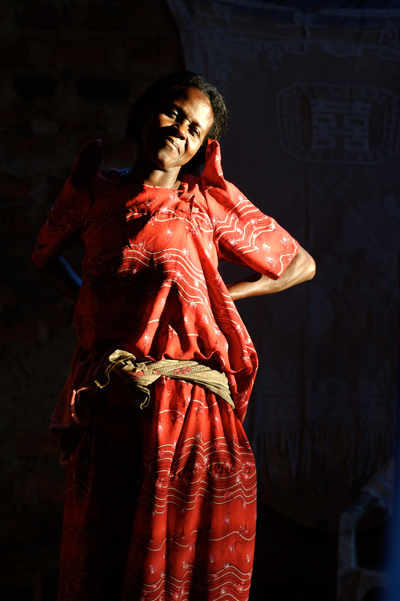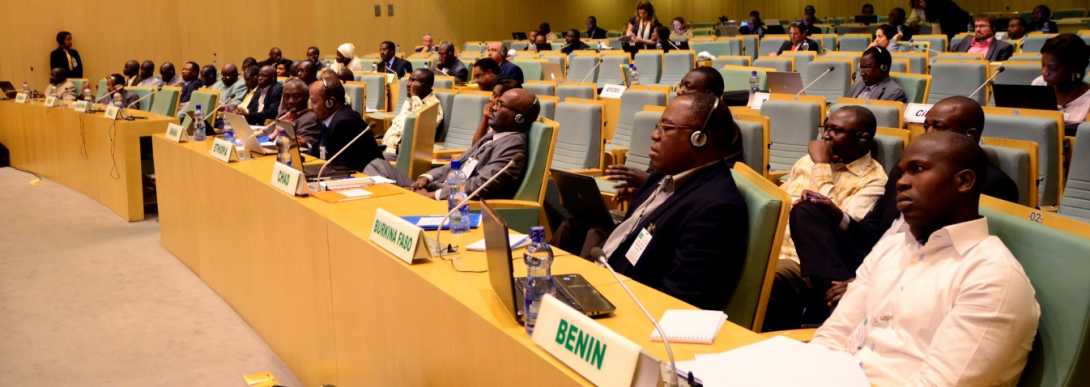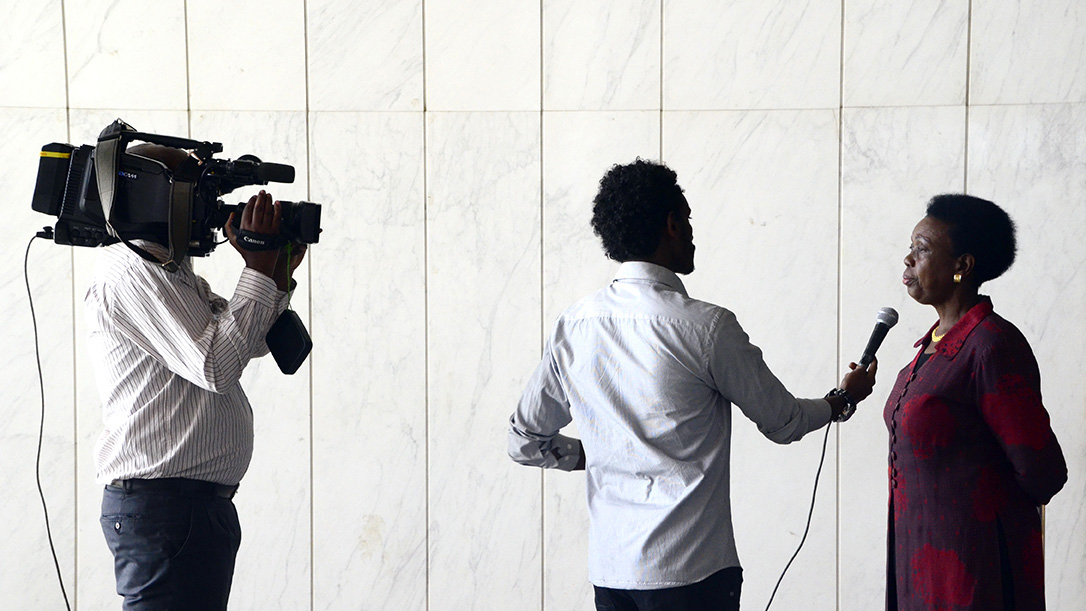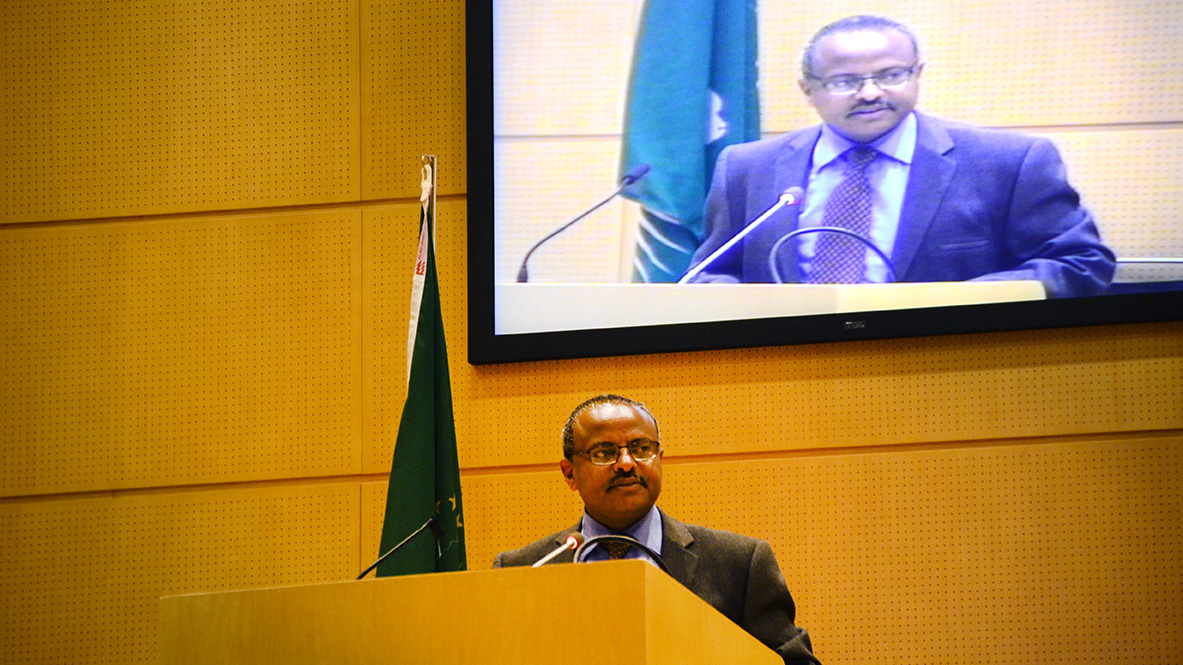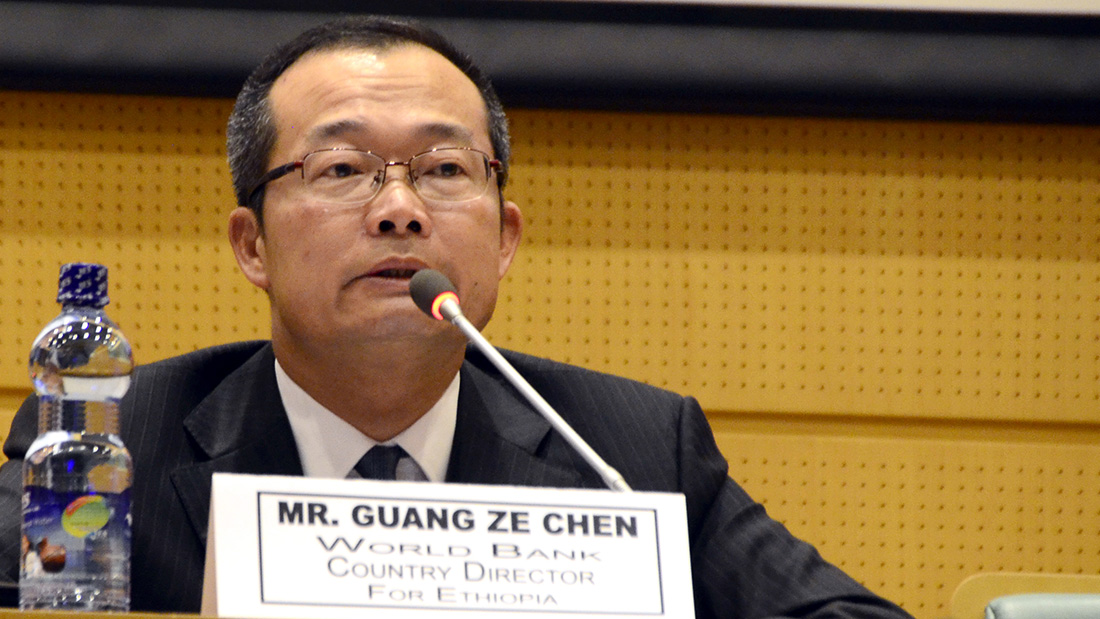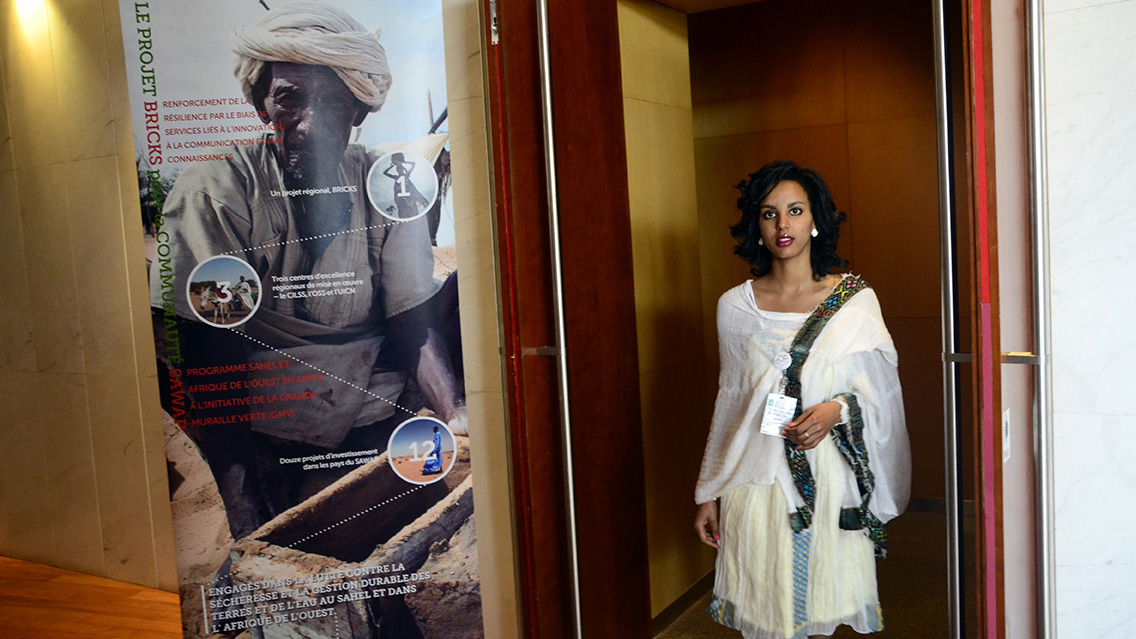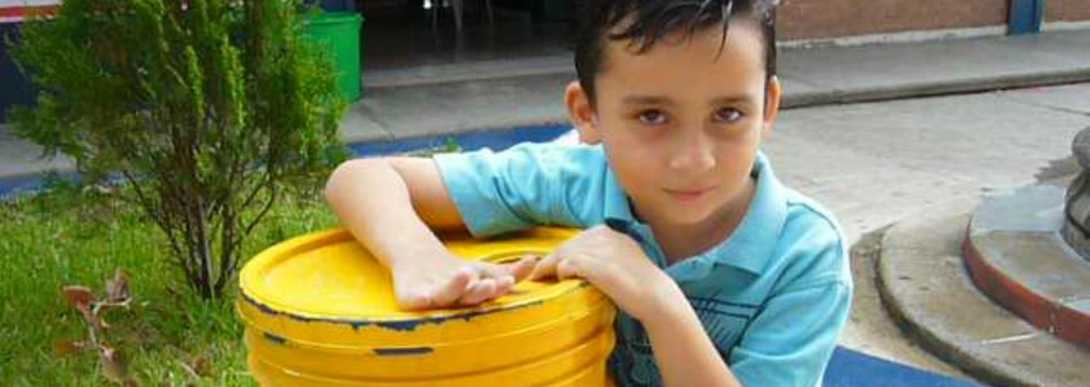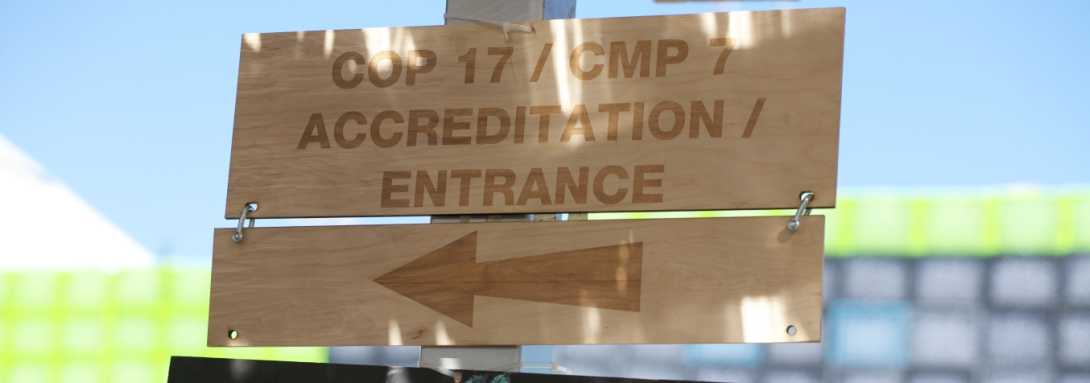
At C4C we want to make your voices heard by the key actors in climate change policy. With that goal in mind, we set out to have a presence at COP17 in Durban, through participating in or hosting five interactive events that would allow us to showcase your messages on climate change issues and actions. The variety in scope of C4C’s events in Durban helped to amplify the voices of our community amongst both current and potential partner organizations as well as youth delegates who were active at the conference. Having events both in and outside of the security perimeter meant that audiences for the C4C events included both accredited delegation members as well as press, NGOs, academics, private sector, and concerned individuals. You can find more information on each of our events at COP17 below.
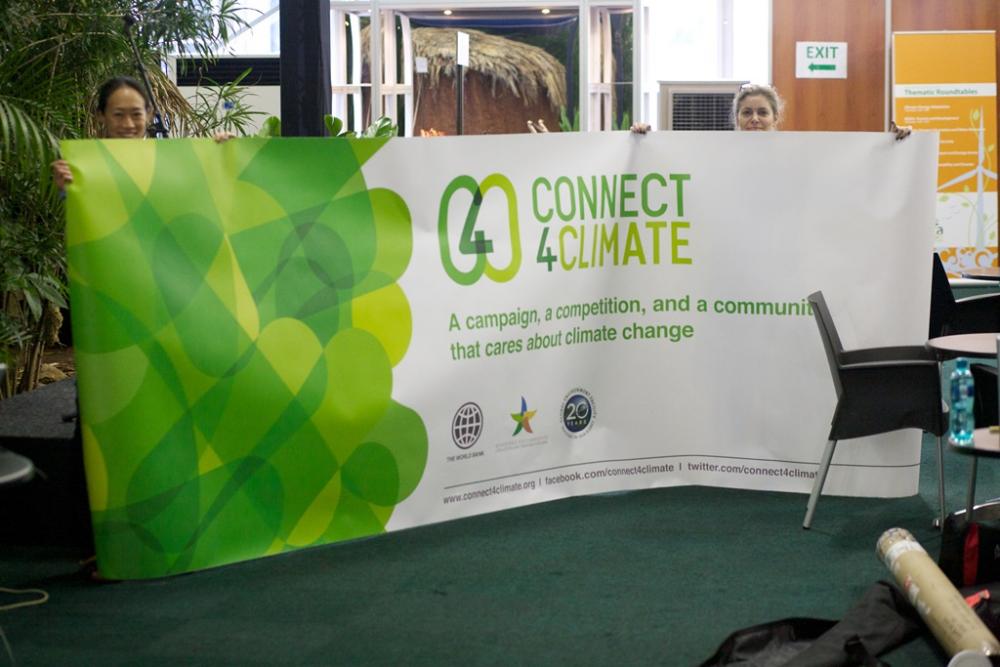
C4C delegates unfurling a banner in the Africa Pavilion at COP17.
